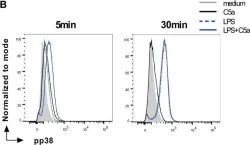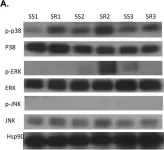The root of asthma can be linked to early life, with prenatal environments influencing risk. We investigate the effects of maternal asthma on the offspring's lungs during fetal and adult life. Adult offspring of asthmatic mothers show an increase in lung group 2 innate lymphoid cell (ILC2) number and function with allergen-induced lung inflammation. Offspring of asthmatic mothers show phenotypic alteration of their lung ILC2s during fetal life, with increased expression of genes related to activation and glucocorticoid signaling. Furthermore, these offspring carry overlapping chromatin-accessible altered regions, including glucocorticoid receptor-binding regions in their lung ILC2s both at the fetal stage and adulthood, suggesting persistent prenatal epigenetic changes. Moreover, maternal exposure to glucocorticoids has similar effects on fetal lung ILC2s and contributes to allergen-induced lung inflammation during adulthood. Thus, asthma during pregnancy may have long-term effects on lung ILC2s in the offspring from the embryonic period, contributing to an increased risk of developing asthma.
© 2025. The Author(s).
Product Citations: 18
In Nature Communications on 13 January 2025 by Takao, T., Matsui, A., et al.
-
FC/FACS
-
Mus musculus (House mouse)
-
Immunology and Microbiology
Unveiling signaling pathways inducing MHC class II expression in neutrophils.
In Frontiers in Immunology on 15 October 2024 by Forrer, P., Palianina, D., et al.
Gram-negative bacillary bacteremia poses a significant threat, ranking among the most severe infectious diseases capable of triggering life-threatening sepsis. Despite the unambiguous involvement of neutrophils in this potentially fatal disease, there are limited data about the molecular signaling mechanisms, phenotype, and function of human neutrophils during the early phase of gram-negative bacillary bacteremia.
By using an unbiased proteomics and flow cytometry approach, we identified an antigen-presenting cell (APC)-like phenotype in human peripheral blood neutrophils (PMN) with MHC class II molecule expression in the early phase of bacteremia. Using an in-vitro model of GM-CSF-mediated induction of APC-like phenotype in PMN, we investigated downstream signaling pathways leading to MHC class II expression.
GM-CSF stimulation of neutrophils leads to the activation of three major signaling pathways, the JAK-STAT, the mitogen-activated protein kinase (MAPK), and the phosphoinositide 3-kinase (PI3K)-Akt-mTOR pathways, while MHC class II induction is mediated by a MAPK-p38-MSK1-CREB1 signaling cascade and the MHC class II transactivator CIITA in a strictly JAK1/2 kinase-dependent manner.
This study provides new insights into the signaling pathways that induce MHC class II expression in neutrophils, highlighting the potential for therapeutic targeting of JAK1/2 signaling in the treatment of gram-negative bacteremia and sepsis. Understanding these mechanisms may open up novel approaches for managing inflammatory responses during sepsis.
Copyright © 2024 Forrer, Palianina, Stühler, Kreuzaler, Roux, Li, Schmutz, Burckhardt, Franzeck, Finke, Schmidt, Bumann and Khanna.
-
FC/FACS
-
Homo sapiens (Human)
-
Immunology and Microbiology
Dynamical and combinatorial coding by MAPK p38 and NFκB in the inflammatory response of macrophages.
In Molecular Systems Biology on 1 August 2024 by Luecke, S., Guo, X., et al.
Macrophages sense pathogens and orchestrate specific immune responses. Stimulus specificity is thought to be achieved through combinatorial and dynamical coding by signaling pathways. While NFκB dynamics are known to encode stimulus information, dynamical coding in other signaling pathways and their combinatorial coordination remain unclear. Here, we established live-cell microscopy to investigate how NFκB and p38 dynamics interface in stimulated macrophages. Information theory and machine learning revealed that p38 dynamics distinguish cytokine TNF from pathogen-associated molecular patterns and high doses from low, but contributed little to information-rich NFκB dynamics when both pathways are considered. This suggests that immune response genes benefit from decoding immune signaling dynamics or combinatorics, but not both. We found that the heterogeneity of the two pathways is surprisingly uncorrelated. Mathematical modeling revealed potential sources of uncorrelated heterogeneity in the branched pathway network topology and predicted it to drive gene expression variability. Indeed, genes dependent on both p38 and NFκB showed high scRNAseq variability and bimodality. These results identify combinatorial signaling as a mechanism to restrict NFκB-AND-p38-responsive inflammatory cytokine expression to few cells.
© 2024. The Author(s).
-
FC/FACS
-
Biochemistry and Molecular biology
-
Immunology and Microbiology
Neonatal imprinting of alveolar macrophages via neutrophil-derived 12-HETE.
In Nature on 1 February 2023 by Pernet, E., Sun, S., et al.
Resident-tissue macrophages (RTMs) arise from embryonic precursors1,2, yet the developmental signals that shape their longevity remain largely unknown. Here we demonstrate in mice genetically deficient in 12-lipoxygenase and 15-lipoxygenase (Alox15-/- mice) that neonatal neutrophil-derived 12-HETE is required for self-renewal and maintenance of alveolar macrophages (AMs) during lung development. Although the seeding and differentiation of AM progenitors remained intact, the absence of 12-HETE led to a significant reduction in AMs in adult lungs and enhanced senescence owing to increased prostaglandin E2 production. A compromised AM compartment resulted in increased susceptibility to acute lung injury induced by lipopolysaccharide and to pulmonary infections with influenza A virus or SARS-CoV-2. Our results highlight the complexity of prenatal RTM programming and reveal their dependency on in trans eicosanoid production by neutrophils for lifelong self-renewal.
© 2023. The Author(s).
In Frontiers in Cellular and Infection Microbiology on 27 July 2021 by Jøntvedt Jørgensen, M., Nore, K. G., et al.
Eicosanoids and intracellular signaling pathways are potential targets for host-directed therapy (HDT) in tuberculosis (TB). We have explored the effect of cyclooxygenase 2 inhibitor (COX-2i) treatment on eicosanoid levels and signaling pathways in monocytes.
Peripheral blood mononuclear cells isolated from TB patients included in a randomized phase I clinical trial of standard TB treatment with (n=21) or without (n=18) adjunctive COX-2i (etoricoxib) were analyzed at baseline, day 14 and day 56. Plasma eicosanoids were analyzed by ELISA and liquid chromatography-mass spectrometry (LC-MS), plasma cytokines by multiplex, and monocyte signaling by phospho-flow with a defined set of phospho-specific antibodies.
Lipoxygenase (LOX)-derived products (LXA4 and 12-HETE) and pro-inflammatory cytokines were associated with TB disease severity and were reduced during TB therapy, possibly accelerated by adjunctive COX-2i. Phosphorylation of p38 MAPK, NFkB, Erk1/2, and Akt in monocytes as well as plasma levels of MIG/CXCL9 and procalcitonin were reduced in the COX-2i group compared to controls.
COX-2i may reduce excess inflammation in TB via the LOX-pathway in addition to modulation of phosphorylation patterns in monocytes. Immunomodulatory effects of adjunctive COX-2i in TB should be further investigated before recommended for use as a HDT strategy.
Copyright © 2021 Jøntvedt Jørgensen, Nore, Aass, Layre, Nigou, Mortensen, Tasken, Kvale, Jenum, Tonby and Dyrhol-Riise.
-
Homo sapiens (Human)
-
Immunology and Microbiology
In Front Immunol on 5 August 2017 by Zaal, A., Dieker, M., et al.
Fig.2.B

-
FC/FACS
-
Homo sapiens (Human)
Collected and cropped from Front Immunol by CiteAb, provided under a CC-BY license
Image 1 of 3
In PLoS One on 31 October 2015 by Li, L. B., Leung, D. Y., et al.
Fig.1.A

-
WB
-
Homo sapiens (Human)
Collected and cropped from PLoS One by CiteAb, provided under a CC-BY license
Image 1 of 3
In PLoS One on 18 July 2015 by Silva, O., Crocetti, J., et al.
Fig.2.D

-
FC/FACS
-
Mus musculus (House mouse)
Collected and cropped from PLoS One by CiteAb, provided under a CC-BY license
Image 1 of 3


